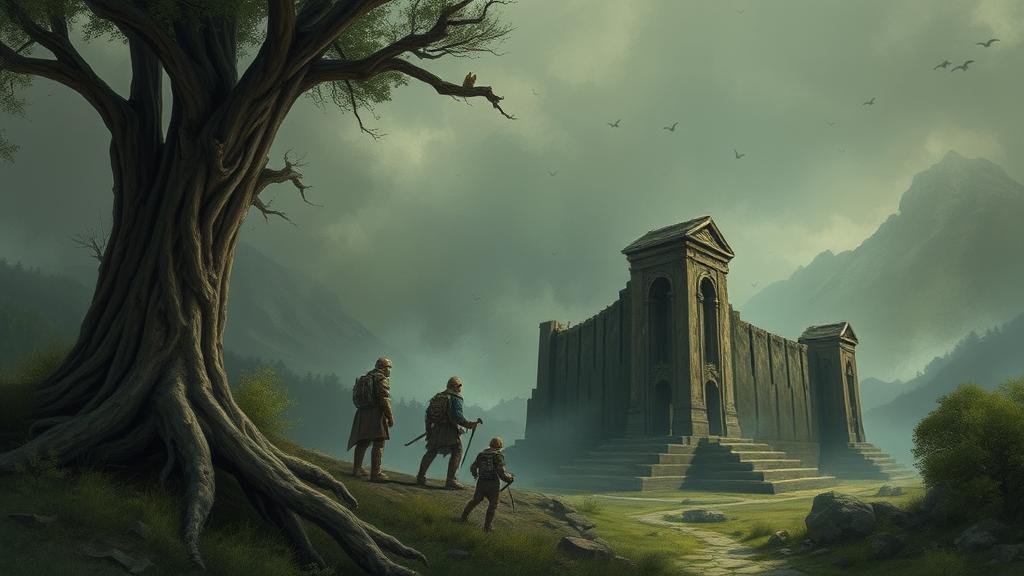Documenting encounters with cryptids said to guard sacred ruins.
Documenting Encounters with Cryptids Said to Guard Sacred Ruins
The world is filled with ancient ruins that spark the imagination, and many of these sites are rumored to be watched over by mysterious creatures known as cryptids. From the Chupacabra of Puerto Rico to the Mokele-Mbembe of the Congo River Basin, these beings are often integrated into the mythos of the land they inhabit. This article explores notable encounters with such cryptids, their historical and cultural significance, and the implications for those who seek to document these phenomena.
Cryptids and Their Historical Context
Cryptids are creatures whose existence is not substantiated by mainstream science, often emerging from folklore and local legends. Many of these beings are associated with sacred sites, representing guardianship or spiritual significance in indigenous cultures.
For example, the legend of the Wendigo among the Algonquin tribes speaks of a malevolent spirit that lurks in the forests of the Northeastern United States and Canada. This creature embodies the destructive nature of greed and is said to watch over remote areas, protecting sacred grounds from defilement.
Notable Encounters with Cryptids at Sacred Sites
Documenting sightings of cryptids around sacred ruins can provide valuable insights into cultural beliefs and the relationship between communities and their environment. Below are several noteworthy encounters:
- The Chupacabra, Puerto Rico: In 1995, a series of unexplained livestock killings in Puerto Rico led to reports of a creature that drained animals blood. Witnesses described it as reptilian with spines along its back, often seen near the ancient ruins of Taino civilization, which add a historical layer of significance to its sightings.
- The Mokele-Mbembe, Congo River Basin: Local tribes in the Congo claim that this aquatic dinosaur-like creature guards their sacred rivers and lands. Reports of sightings date back to the 18th century, with numerous expeditions attempting to substantiate its existence, highlighting the impact of local lore on ecological conservation.
- The Bunyip, Australia: This creature from Aboriginal mythology is said to inhabit swamps and rivers, often associated with sacred water sources. Documented sightings by early settlers in the 19th century ignited curiosity about the intersection of myth and indigenous spirituality in Australia.
Impact of Documenting Encounters
Documenting encounters with cryptids can have significant implications for cultural preservation and understanding ecological balance. By recording these stories, researchers not only highlight the rich folklore of a region but also respect the traditions of the local communities.
Field researchers often collect testimonials, analyze environmental changes, and even employ technology such as motion sensor cameras to capture potential cryptid activity. A prominent example of this is the Crypto Crew Project, which brings together enthusiasts and scientists to explore sightings and provide a platform for community stories.
Challenges in Documentation
Despite the fascinating aspects of documenting cryptid encounters, challenges abound:
- Credibility Issues: Many documented sightings remain anecdotal, leading to skepticism within the scientific community.
- Environmental Concerns: Overexploitation of sacred sites for tourism may disturb the areas believed to be protected by these creatures.
- Cultural Sensitivity: Engaging with local beliefs requires a respectful approach to avoid misrepresentation or appropriation.
Conclusion: The Path Ahead
Documenting encounters with cryptids that guard sacred ruins is more than an exploration of the unknown; it offers a window into the beliefs that shape human relationships with nature and history. By attending to these stories, researchers can bridge gaps between folklore and science, enriching our understanding of the natural world and the cultures that inhabit it.
For those wishing to delve deeper into this fascinating intersection of myth and reality, consider participating in local folklore projects, utilizing social media to share stories, and advocating for the protection of sacred sites. Engaging with these narratives not only preserves history but also honors the ongoing journey of those who believe in safeguarding these mystical domains.

